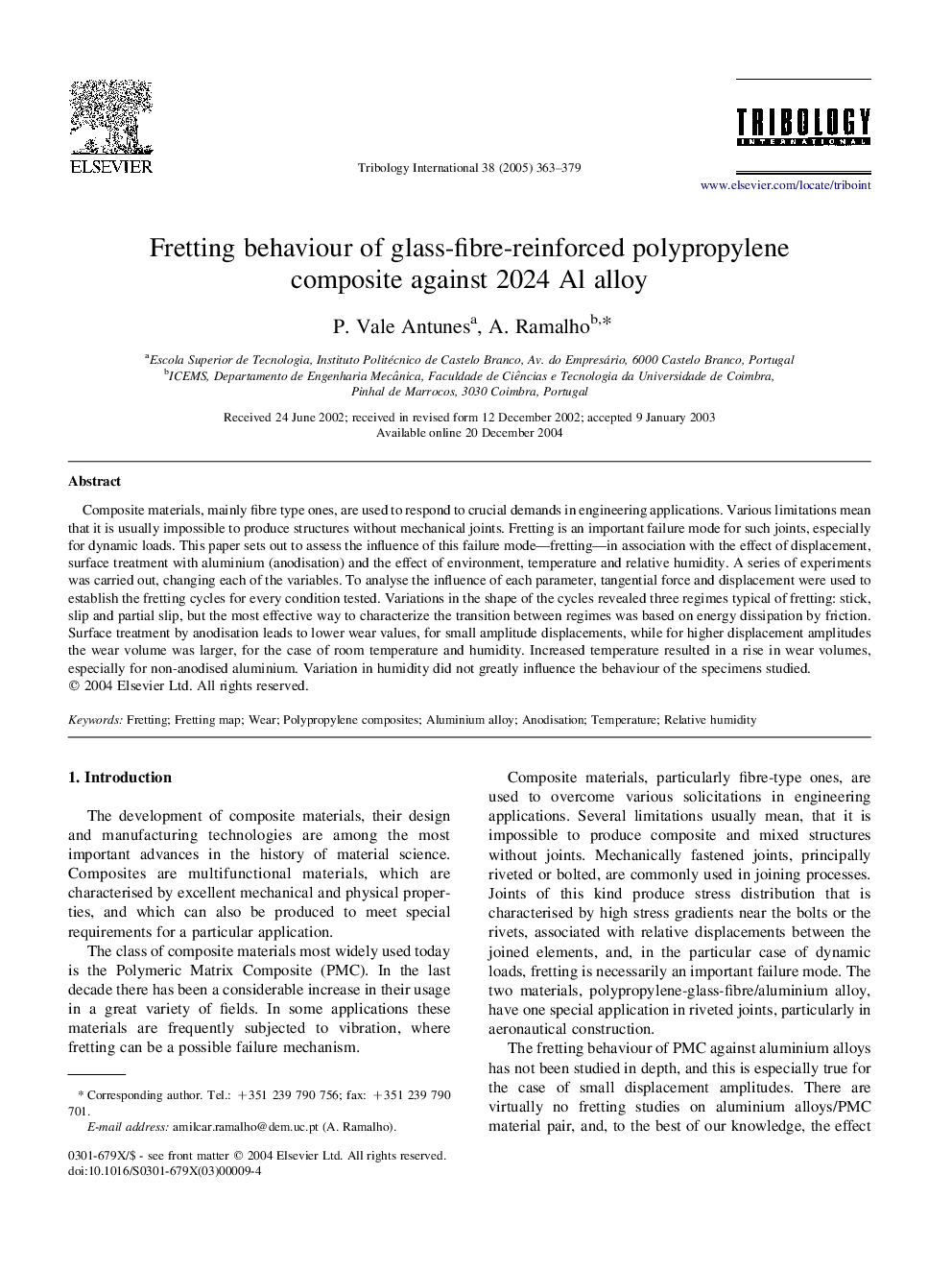| Article ID | Journal | Published Year | Pages | File Type |
|---|---|---|---|---|
| 10384340 | Tribology International | 2005 | 17 Pages |
Abstract
Composite materials, mainly fibre type ones, are used to respond to crucial demands in engineering applications. Various limitations mean that it is usually impossible to produce structures without mechanical joints. Fretting is an important failure mode for such joints, especially for dynamic loads. This paper sets out to assess the influence of this failure mode-fretting-in association with the effect of displacement, surface treatment with aluminium (anodisation) and the effect of environment, temperature and relative humidity. A series of experiments was carried out, changing each of the variables. To analyse the influence of each parameter, tangential force and displacement were used to establish the fretting cycles for every condition tested. Variations in the shape of the cycles revealed three regimes typical of fretting: stick, slip and partial slip, but the most effective way to characterize the transition between regimes was based on energy dissipation by friction. Surface treatment by anodisation leads to lower wear values, for small amplitude displacements, while for higher displacement amplitudes the wear volume was larger, for the case of room temperature and humidity. Increased temperature resulted in a rise in wear volumes, especially for non-anodised aluminium. Variation in humidity did not greatly influence the behaviour of the specimens studied.
Keywords
Related Topics
Physical Sciences and Engineering
Chemical Engineering
Colloid and Surface Chemistry
Authors
P. Vale Antunes, A. Ramalho,
